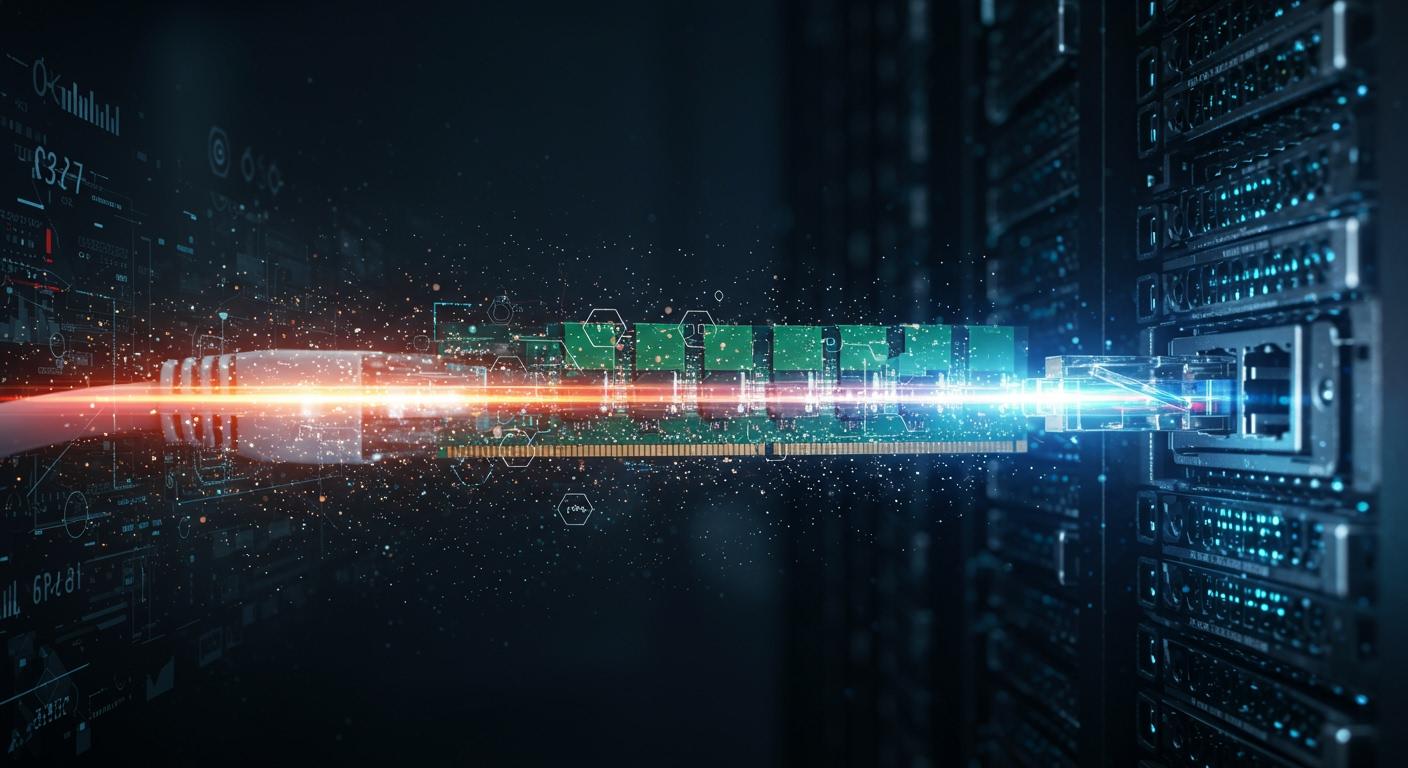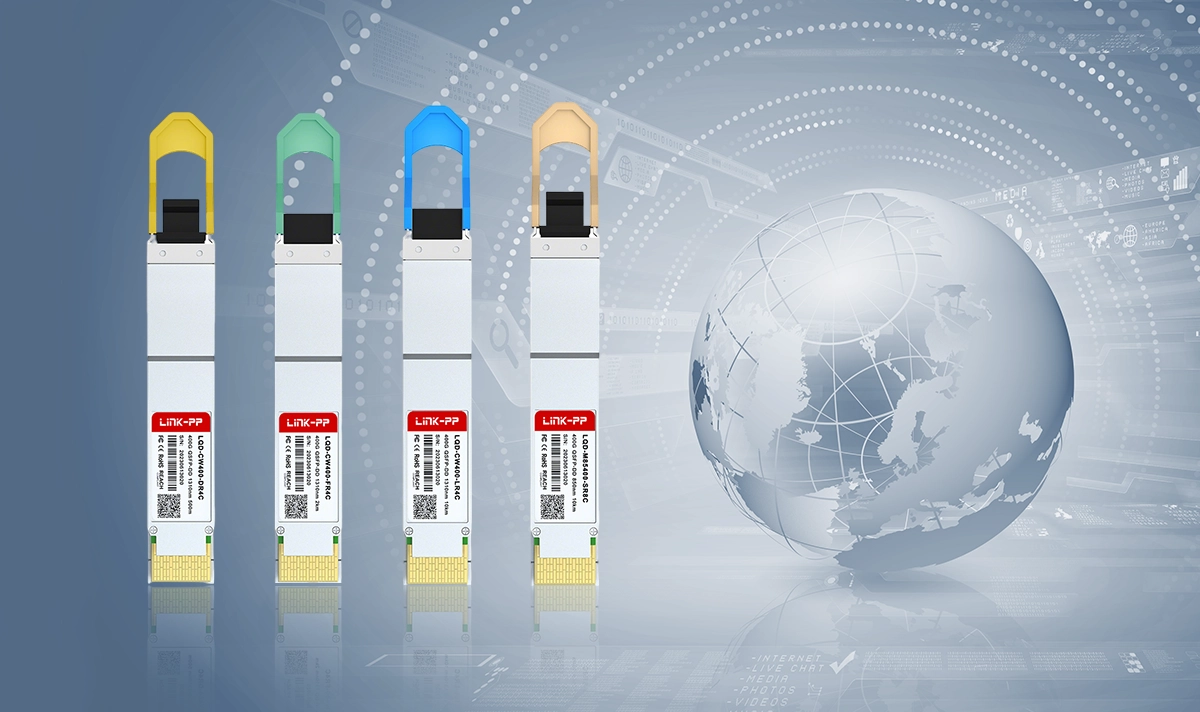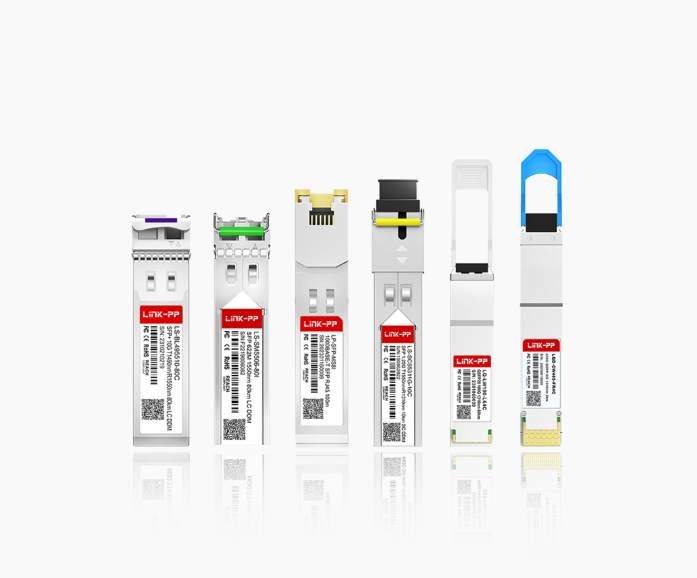
In today's data-driven world, where microseconds matter and application performance is king, traditional network protocols are hitting a wall. Enter RoCE (RDMA over Converged Ethernet), a game-changing technology that delivers blistering speed and ultra-low latency for modern data centers. This post will demystify RoCE, explore its two versions, and show you how it's revolutionizing high-performance computing (HPC), AI/ML workloads, and cloud infrastructure. We'll also dive into a critical hardware component: the optical transceiver, and highlight how a solution like the LINK-PP 800G QSFP-DD SR8 is engineered to meet these extreme demands.
✅ What is RoCE? Cutting the Network Overhead
At its core, RoCE stands for RDMA over Converged Ethernet. To understand it, we must first break down RDMA.
RDMA (Remote Direct Memory Access): This is a technology that allows a computer to access memory on a remote machine without involving its CPU or operating system. This "kernel bypass" is the secret sauce that eliminates significant latency and CPU overhead.
Over Converged Ethernet: RoCE takes this powerful RDMA capability and runs it over standard Ethernet networks. This is a huge advantage, as it allows organizations to leverage their existing Ethernet infrastructure rather than investing in specialized, expensive fabrics like InfiniBand.
The primary benefit? Extremely low latency and high throughput. By bypassing the TCP/IP stack and the remote CPU, data transfer becomes a direct memory-to-memory operation, freeing up valuable CPU cycles for the actual application.
✅ RoCE v1 vs. RoCE v2: What's the Difference?
Not all RoCE is created equal. There are two main versions, and understanding the distinction is crucial for network design.
Feature | RoCE v1 (RoCE) | RoCE v2 (Routable RoCE) |
|---|---|---|
Ethernet Type | Ethernet layer 2 only | IP-based (UDP), Layer 3 |
Network Scope | Limited to a single Layer 2 broadcast domain (e.g., a single data center rack). | Routable across Layer 3 IP networks (entire data center, or between data centers). |
Flexibility | Low | High |
Use Case | Closed, high-performance clusters. | Scalable, cloud-native environments. |
Why does this matter? For most modern, scalable deployments, RoCE v2 is the definitive choice. Its routable nature makes it ideal for dynamic cloud environments and is a key enabler for disaggregated storage and hyper-converged infrastructure.
✅ The Pillars of a Successful RoCE Deployment
Deploying RoCE isn't just about plugging in new NICs. It requires a carefully tuned environment to achieve its promised low-latency networking. The three key pillars are:
Lossless Ethernet: RoCE is highly sensitive to packet drops. A single dropped packet can cause massive latency spikes as the protocol waits for retransmission. This necessitates a lossless network fabric, typically achieved through Data Center Bridging (DCB) technologies, especially Priority Flow Control (PFC). PFC creates a "lossless" virtual lane for RoCE traffic, pausing other traffic types if congestion is detected.
Appropriate Hardware: You need RoCE-capable Network Interface Cards (NICs) and switches that support DCB features. The quality of your hardware directly impacts performance stability.
Precise Configuration: Implementing Explicit Congestion Notification (ECN) and proper Quality of Service (QoS) policies is non-negotiable for maintaining smooth data flows in a high-performance computing cluster.
✅ The Unsung Hero: Optical Transceivers in RoCE Networks

When pushing networks to their absolute limit with RoCE, every component must be optimal. This is especially true for optical transceivers—the components that convert electrical signals to light and back. A subpar transceiver can introduce signal integrity issues, jitter, and errors that directly undermine RoCE's low-latency goals.
For a RoCE-enabled network demanding the highest bandwidth, you need transceivers built for reliability and performance. This is where choosing a proven supplier becomes critical. For instance, the LINK-PP 800G QSFP-DD SR8 optical module is specifically engineered for such demanding applications. It supports an 800Gbps data rate over multimode fiber, providing the immense, clean pipeline required for AI and machine learning workloads that rely on RoCE for fast data ingestion and model training.
When evaluating which optical transceiver is best for high-frequency trading or AI data centers, key considerations like low power consumption, high thermal stability, and full compliance with industry standards are paramount. The LINK-PP 800G series meets these rigorous demands, ensuring that your network's physical layer is not the bottleneck.
✅ RoCE in Action: Real-World Applications
Where is this technology making the biggest impact?
Hyper-Converged Infrastructure (HCI): Platforms like VMware vSAN use RoCE to accelerate storage traffic between nodes, drastically reducing I/O latency.
AI and Machine Learning: Training complex models requires moving massive datasets between storage and GPU servers. RoCE minimizes the data transfer time, accelerating the entire training cycle.
Disaggregated Storage: Solutions like NVMe-of (NVMe over Fabrics) often use RoCE as the transport layer, providing local-like performance from remote storage arrays.
High-Frequency Trading (HFT): In trading, every microsecond counts. RoCE provides the deterministic, ultra-low latency required for competitive advantage.
✅ Is RoCE Right for Your Data Center?
RoCE is a powerful tool, but it requires expertise to implement correctly. If your applications are latency-sensitive and you're running into CPU bottlenecks due to network processing, RoCE is undoubtedly worth a serious evaluation. The performance gains for suitable workloads can be transformative.
Ready to experience the power of a next-generation network? Leveraging RoCE technology is key to building a modern, high-performance data center.
✅ FAQ
What is a lossless Ethernet network?
A lossless Ethernet network does not drop data packets. You get reliable data transfer. RoCE works best on this type of network. Your data moves smoothly and quickly.
What hardware do you need for RoCE?
You need network cards that support RDMA. Your switches should support lossless Ethernet features like Priority Flow Control (PFC). Most modern data center equipment supports RoCE.
What makes RoCE different from regular Ethernet?
RoCE lets you move data directly between computers’ memory. You skip the CPU and extra steps. This gives you lower delay and faster data transfers than regular Ethernet.
What problems can happen with RoCE?
You may see issues if your network drops packets. Performance can drop if you do not set up lossless Ethernet. You should check your hardware and settings for best results.




